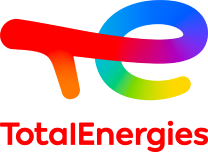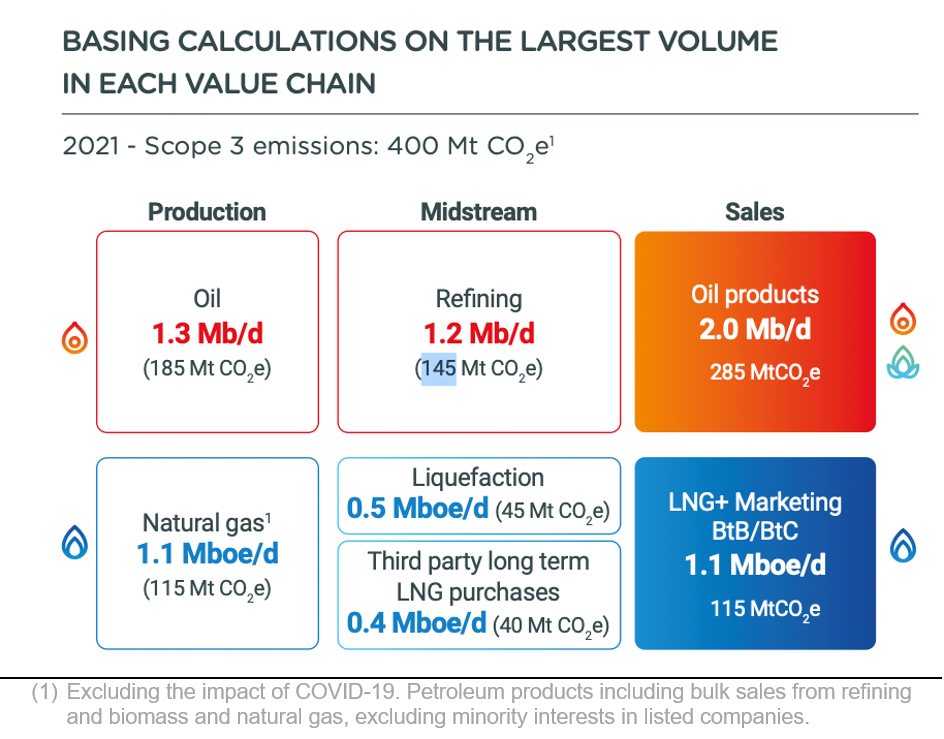News
Download the Document (pdf - 215 KB)
The methodology used by the authors of the Greenpeace report is, at the very least, dubious. The calculations take no account of TotalEnergies’ integration throughout the oil and gas value chains, and Greenpeace is therefore counting the emissions caused by the fuel combustion in these value chains several times. Applying the same reasoning to all the businesses that produce, transport, refine, trade and sell fossil fuels would lead to a total that is several times higher than the world’s annual CO2 emissions.
The emissions calculated by Greenpeace for TotalEnergies amount to over 8% of the planet’s greenhouse gas emissions from oil and gas (19 billion tons of CO2 in 2019, according to the IEA): it should be self-evident that this number is out of proportion to TotalEnergies’ market share of the world’s oil and gas sector (between 1.5% and 2%).
Greenpeace criticizes the reporting of emissions for 2019 and seems to dismiss the information reported by TotalEnergies since then concerning the different Scope 3 categories.
To report its emissions, TotalEnergies complies with the industry-specific methodologies for Oil & Gas published by Ipieca, which themselves comply with the international methodologies published in the 1998 GHG Protocol. To prevent double counting, this methodology is based on the highest volume of production or sales in the oil or gas value chain . In addition to this, all TotalEnergies’ emissions reports are reviewed by Ernst & Young.
TotalEnergies supports the development of international standards for climate reporting for the purpose of comparison and the standardization of practice and methodology. TotalEnergies was among the first to apply the recommendations of the Task Force on Climate-related Financial Disclosures (TCFD) and strives to provide the public with the fullest possible climate-related information, as was the case in 2022 when it published the first Sustainability & Climate 2022 Progress report.
The aim of the GHG Protocol was to standardize and unify international reporting for all businesses to ensure that their reported GHG emissions were comprehensive, relevant and comparable. The GHG accounting principles and reporting ensure that the reported inventory gives a realistic, consistent and accurate view of a business’s GHG emissions.
Greenpeace gives a figure for Scope 1 emissions based on equity share of over 160 million tons CO2e in 2019, whereas the Scope 1 emissions based on equity share reported by TotalEnergies amounted to 55 million tons of CO2.
Scope 1 emissions are direct emissions generated by TotalEnergies’ activities. Scope 2 emissions are indirect emissions associated with the purchase of energy (electricity, heat and steam), i.e. emissions associated with the production by a third party of the energy purchased by TotalEnergies. These emissions can either be reported for assets over which the Company has operational control, or based on its equity share in the assets it has a financial interest in. In 2021, TotalEnergies’ Scope 1+2 operated emissions amounted to 37 million tons of GHGs (excluding Covid 19 effect), down 20% from 2015. TotalEnergies’ Scope 1 + 2 equity share emissions amounted to 54 million tons in 2021 (49 million tons for Scope 1 alone).
On page 302 of its 2021 Universal Registration Document, TotalEnergies published the breakdown of Scope 1 and Scope 2 emissions, both operated and based on equity share, by sector, region and type of greenhouse gas. All climate-related information disclosed by TotalEnergies is reviewed by Ernst & Young.
The figure of 160 million tons of GHG reported by Greenpeace for 2019 (Scope 1 based on equity share) is baseless. Since this report challenges the quality and reliability of information disclosed by TotalEnergies, it should be noted that the circulation of false or misleading information about the position of a shares issuer is prohibited, and TotalEnergies reserves all its rights in this connection.
Scope 3, category 11 GHG emissions correspond to indirect GHG emissions related to the use by customers of energy products produced or sold, i.e., their combustion to obtain energy. In order to avoid double counting, TotalEnergies accounts for the larger volume in the oil and gas value chain, i.e., the higher of production or sales. In 2021, the calculation of Scope 3 GHG emissions for the oil value chain takes into account sales of petroleum products and biofuels (higher than production), and for the gas value chain, gas sales, either in the form of LNG or through marketing to B2B/B2C customers, which are equivalent to marketable gas production. In 2021, these Scope 3 emissions (excluding COVID-19 effect) stood at 400 million tons of GHG, here too down from 2015.
Greenpeace criticizes TotalEnergies for focusing on category 11 in its Scope 3 reporting for 2019, while recognizing that this is the most significant category, since it corresponds to combustion of energy products.
TotalEnergies confirms that category 11 is by far the major source (400 million tons in 2021) and had the opportunity to provide data for other Scope 3 categories in its CDP report for 2021 that reveals category 11's significantly larger contribution. For 2021, TotalEnergies reported:
- Category 1 Purchased goods and services: 7.6 MtCO2e
- Category 2 Capital goods: 755 ktCO2e
- Category 3 Fuel-and-energy-related activities: 5 MtCO2e
- Category 4 Upstream transportation and distribution: 7.6 MtCO2e
- Category 5 Waste generated in operations: 139 ktCO2e
- Category 6 Business travel: 20 ktCO2e
- Category 7 Employee commuting: 40 ktCO2e
1 See Ipieca’s 2016 document "Estimating petroleum industry value chain (Scope 3) greenhouse gas emissions", pp 50-55
About TotalEnergies
TotalEnergies is a global multi-energy company that produces and markets energies: oil and biofuels, natural gas and green gases, renewables and electricity. Our more than 100,000 employees are committed to energy that is ever more affordable, cleaner, more reliable and accessible to as many people as possible. Active in more than 130 countries, TotalEnergies puts sustainable development in all its dimensions at the heart of its projects and operations to contribute to the well-being of people.
TotalEnergies Contacts
- Media Relations: +33 (0)1 47 44 46 99 l [email protected] l @TotalEnergiesPR
- Investor Relations: +33 (0)1 47 44 46 46 l [email protected]
TotalEnergies on social media
- Twitter : @TotalEnergies
- LinkedIn : TotalEnergies
- Facebook : TotalEnergies
- Instagram : TotalEnergies
Cautionary Note
The terms “TotalEnergies”, “TotalEnergies company” or “Company” in this document are used to designate TotalEnergies SE and the consolidated entities that are directly or indirectly controlled by TotalEnergies SE. Likewise, the words “we”, “us” and “our” may also be used to refer to these entities or to their employees. The entities in which TotalEnergies SE directly or indirectly owns a shareholding are separate legal entities. TotalEnergies SE has no liability for the acts or omissions of these entities. This document may contain forward-looking information and statements that are based on a number of economic data and assumptions made in a given economic, competitive and regulatory environment. They may prove to be inaccurate in the future and are subject to a number of risk factors. Neither TotalEnergies SE nor any of its subsidiaries assumes any obligation to update publicly any forward-looking information or statement, objectives or trends contained in this document whether as a result of new information, future events or otherwise. Information concerning risk factors, that may affect TotalEnergies’ financial results or activities is provided in the most recent Registration Document, the French-language version of which is filed by TotalEnergies SE with the French securities regulator Autorité des Marchés Financiers (AMF), and in the Form 20-F filed with the United States Securities and Exchange Commission (SEC).




